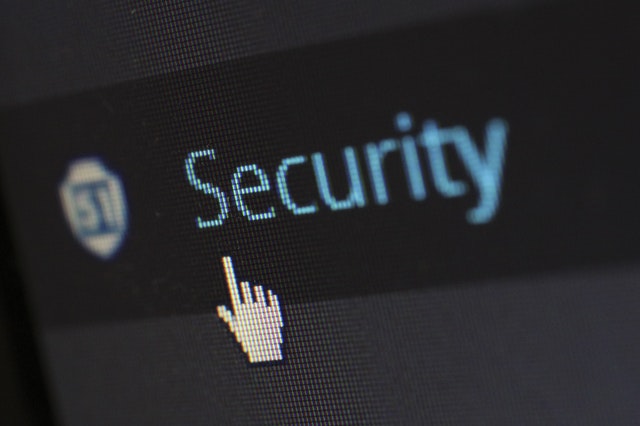Whether at home, the office, in a restaurant, or on the road, smart technology is everywhere we go. You probably check your smartphone for the weather report, find new recipes, or perhaps use a tablet to read your favorite books. Many homeowners control smart speakers, turn off the lights, change the temperature, or even secure their home. Technology is ubiquitous, but what does that mean for our safety?
What to know about safety and smart gadgets
If you use any form of smart technology, there’s one thing every device has in common: it connects to your internet via your home Wi-Fi network. Unfortunately, this means that your smart devices could easily become a victim of hacking or that a complete stranger could access your devices.
While this smart home technology makes life easier and automates functions to simplify your life, it’s also at risk of a range of cyberattacks. Implementing simple cybersecurity measures is essential to protect your data and private information. That might include your banking data, private documents, or even passwords on your office computer, resulting in stolen information that someone takes from the company you work for. No matter what type of smart device you own, speakers, smart fridges, and TVs can risk your privacy and security. According to a 2021 research study, 80 percent of Internet-connected devices are vulnerable to some form of cyberattack. Read on to learn how to keep your smart devices secure at home, at work, and anywhere you go.
Types of smart home devices
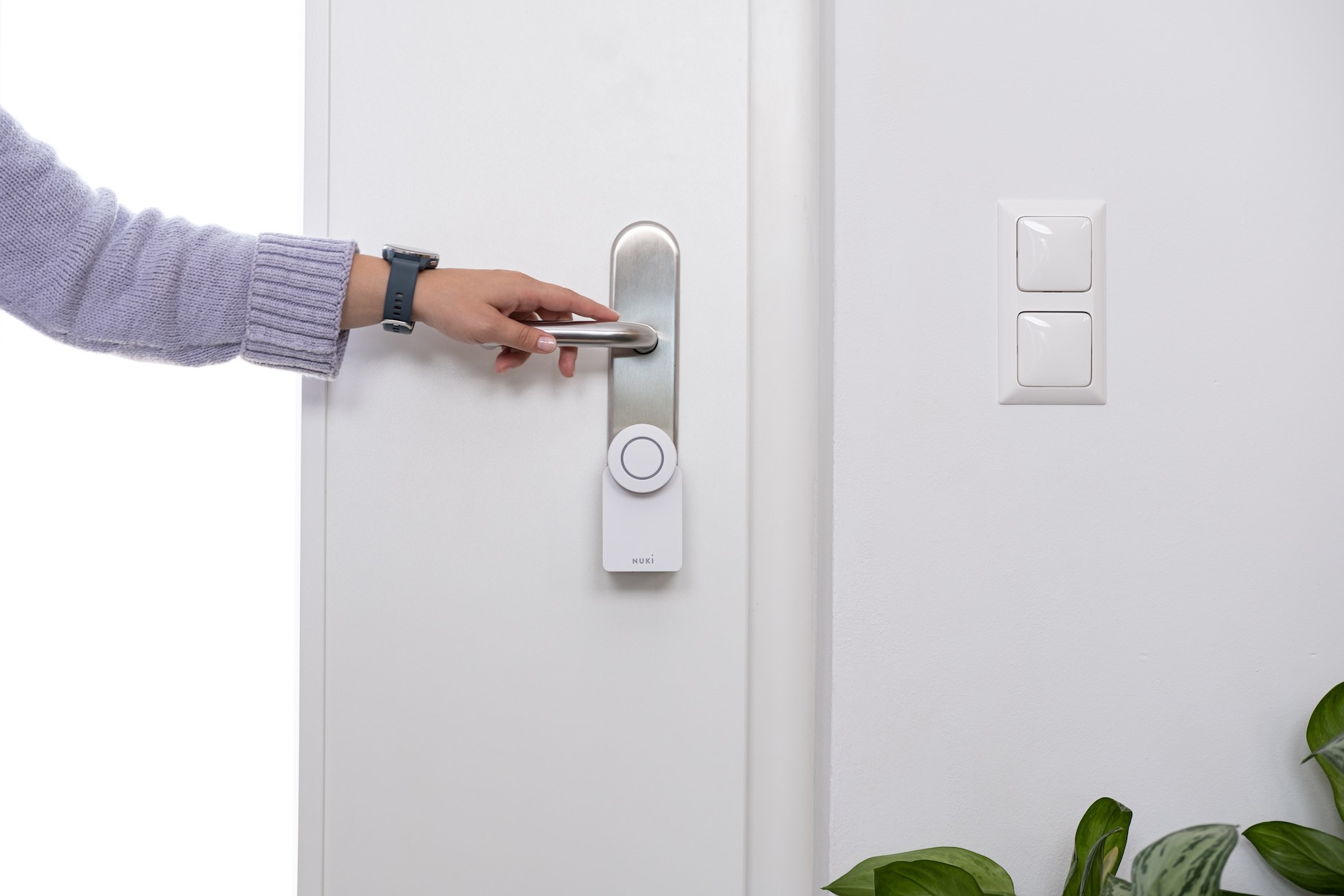
A wide range of smart home devices is available to make your life at work and home easier. You can make your home more livable and automated by adding appliances and smart home devices that can be controlled from everywhere. There are hundreds of smart home devices and technology in different categories. Here are some of the most common types, their uses, and which ones are best for each room:
Smart locks
Smart locks add security and can be opened with just a touch of a button from your smartphone app. These locks use things like a PIN or fingerprint technology and connect wirelessly for easy access without needing a traditional key.
Smart doorbells
A smart doorbell adds a layer of security to your home thanks to a built-in Wi-Fi-connected camera. When someone rings the doorbell, you’ll be alerted through an app, and the camera turns on automatically. Whether at home or away, a smart doorbell is a great way to see who approaches your home.
Security cameras
Wireless security cameras make monitoring what’s happening around your home easy. These cameras are easy to install and provide instant footage of activity around your property. Many brands connect and include monitoring services, so you’ll be alerted to any unusual or suspicious activity, even when you’re not there.
Smart thermostats
A smart thermostat is a great way to save energy and control the temperature inside your home. These smart home devices can “learn” your habits to help you keep your home at a comfortable temperature without overworking your HVAC system. You can also control the temperature remotely, so it’s comfortable when you return home, and you can adjust it while you’re gone to save even more on energy costs.
Smart lights
You can adjust smart lights from a smartphone app or software program. You can turn these lights on and off without ever having to flip a switch. Many smart lights also have a unique feature that lets you change the color or tone to create a beautiful atmosphere for any occasion.
Solar panels
If you want to save money on your energy bills and go eco-friendly, solar panels are a great way to do so. Solar panels harvest energy from the sun. Adding them to your roof allows you to power your entire home without being part of the electrical grid.
Smart showers
Get total control over your showering experience with smart showers. These smart home devices let you start or stop the water remotely, control the water temperature, and create a custom shower experience, including the type of water flow, massaging action, and more.
Smart refrigerator
Smart refrigerators connect to an app to make life easier. Most smart fridges include a built-in screen that you can use to watch TV, make grocery lists, and keep track of what’s already in your fridge.
Smart speaker
Smart speakers like Alexa and Google Nest provide a range of voice-controlled actions that make living at home easier than ever. These smart speaker devices can play music, give you the weather, control your smart lights, and more through simple voice commands.
Smart plugs
Using a smart plug can turn almost anything in your home into a “smart device.” These plugs go between the wall outlet and a power cord and can connect to an app to give you more control over lighting, appliances, security cameras, and more.
Smart TVs
A smart TV gives you an easy connection to services like Netflix, Hulu, and other streaming services. These TVs can also be paired with your smartphone to watch anything from your device on the TV. A smart TV connects to the Internet so you can browse the web, listen to music, and more.
Vacuum robots
Try a robotic vacuum if you want to keep your home clean with little effort. These devices vacuum your floors through an app or a single button push. The vacuum robot learns the layout of your home and moves through the route to clean your floors without you ever having to lift a finger.
Relaxation gadgets
Some smart home devices offer the ultimate in relaxation, like massage chairs, foot massagers, and white noise machines. Meditation lamps, noise-reducing headphones, and digital aromatherapy devices can also be found.
Only use what you need
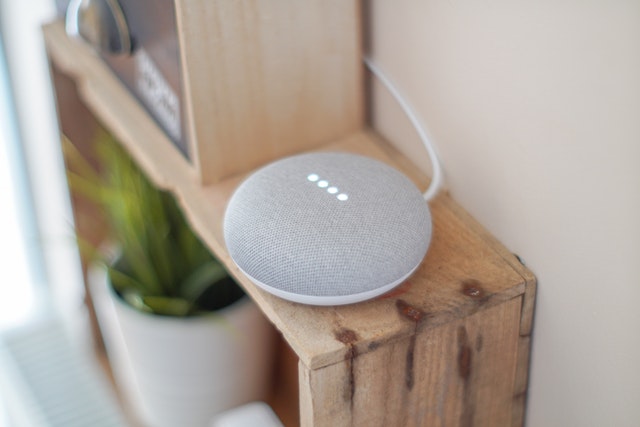
Having a smart home is growing in popularity, and many people are looking to convert everything in their home to “smart” devices only. However, you may not need to own every smart device out there. The more smart devices you have, the more open you are to being hacked. Even a smart fridge connected to your home Wi-Fi network means that someone could hack into it and access everything connected to that network. Think about which smart appliances and other devices you truly need for home safety. Try to buy the devices that will make you more secure or help make your life easier, and skip the rest.
Set up your router securely
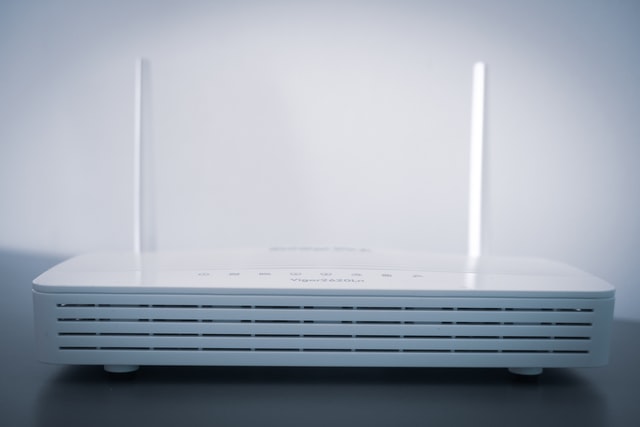
Think of your smart home’s Wi-Fi router as the doorway to everything. You don’t want it to break down if a cybercriminal kicks the door. Remember that everything begins with your home’s Wi-Fi router, so correctly setting it up is vital for device security.
Change the router name
All routers come with a default name from the manufacturer, so it’s good to change it once you set it up. Cyber hackers look for the default make and model name of routers to help them gain access to a system. Change the router’s name to something unique that isn’t related to you, your address, or anything else pertaining to your personal information.
Create a unique password
One of the key elements to keeping your devices secure is to create a unique password. Never use a generic password like “Myhome123” or anything else that a hacker might try. You can do this by using a random password generator or mixing a combination of capital letters, numbers, and symbols so the password is more difficult to find or use. If you’re someone who struggles with keeping track of your passwords, consider a password manager to keep your different passwords protected.
Use the highest level of encryption
Currently, WPA2 is the highest level of encryption available, although WPA3 is on the way. Upgrade your current router if it only supports WPA or WEP to WPA2 so that it’s encrypted against hackers. The more secure your router is, the safer all smart home devices are.
Create different accounts for each device
Every smart device you own requires you to set up an account to access it. Avoid using your personal email address and create a unique one dedicated solely to your smart device accounts. This simple step will allow you to control your devices and keep them organized in one separate account from your personal email. Consider creating a unique email account and password for each individual smart device for even more email security. The only con to this is that you’ll need to remember every single email address and password for every unique device.
Use a highly secure password
Never use passwords that are easy to guess. You should also never include personal information like birthdays, part of your social security number, or your first and last name. Have capital letters, special characters, and numbers that will create a “hackproof” password. The longer your password is, the better and more secure it will be.
Use a VPN for browsing
Set up a VPN or Virtual Private Network to help secure your smart home devices. This particular software encrypts all of your online data by putting it through a “VPN tunnel,” which will make your data untraceable to cybercriminals and hackers. Although the risks posed by smart home devices are serious, using a VPN to protect your entire network is one of the best ways to secure your data from hackers. Simply install the VPN on your Wi-Fi router so every device connected to the Internet encrypts your data. This powerful tool protects your online privacy and security while you work from home or enjoy using all of your smart devices. Consider using a business-level VPN solution if you have a home business or use dozens of connected devices. Otherwise, a personal VPN network should be enough to protect most smart homeowners from cyberattacks.
Enable multi-factor authentication
A good rule of thumb is that the stronger your password is, the lower the chances you’ll be hacked. Remember to adjust the default password on all smart home devices, including the fridge, TV, washer, and dryer. Two-factor authentication (also known as 2FA) is a great way to protect yourself. This extra layer of authentication requires things like a code sent to your smartphone via text or fingerprint activation, making it even more difficult for third parties to access your personal information and data. Most new smart devices include 2FA by default, although some may not. You can also enable 2FA through apps like Google Authenticator.
Audit your smartphone’s security
Today, most smart home devices are accessed and managed through smartphone apps. You’ll need to focus on keeping your phone secure by adding a 4-to-6-digit passcode or activating the fingerprint passcode for access. If you lose your phone, someone else cannot access your home remotely. It’s important to note that public Wi-Fi is easily hacked, so remember to turn off the “automatically connect to Wi-Fi” feature on your phone so you don’t accidentally connect to a public network when you’re out and about. Consider using a mobile hotspot from your cell service provider to create a private Internet network anywhere you get cell service.
Update your devices regularly
Almost all computers, smartphones, and smart home devices get constant updates for software and security features. Ensure you’re constantly updating your mobile apps that connect to your smart devices. You can adjust the settings to turn on automatic software updates so you’re continually downloading the very latest security patches and upgrades.
Use an internet filter for kids
Kids tend to browse the Internet, completely unaware of its dangers. This could lead to your network being hacked or infected by a virus, resulting in serious security breaches that could affect your smart devices and more.
Talk to them: Have a conversation with your kids about keeping sensitive information away from the internet. Credit card numbers and addresses are some of the things they shouldn’t share online.
Block adult content: Add a filter in Google search, install ad blockers, and use website filters to help keep your kids and your network secure.
Home automation ideas
Smart devices have the intelligence to do more things than you can imagine. Adding Home Automation preferences will give the opportunity to live a simpler life without having to do everything manually. Just add a home automation order to your devices and program what triggers the action. There are many home automation actions you can take, here are a few.
Lighting
Tapping one button turns all the lights on or off.
Lights turn on the entryway when someone rings the doorbell.
Motion sensors can detect if someone enters a room and turns the lights on or off if someone leaves the room and there’s no movement detected.
Nighttime lights – the lights turn on at 20% just enough so you know where you are walking without disturbing your family members.
Security
Receive an alert when motion is detected in your house through radar sensing and ambient sensing.
Illuminate all of the house lightings if there’s a security breach.
Program your lights to turn on at certain times when you are away on vacations or a trip so it looks as if someone is in the house.
Program your doors to auto-lock after 5 minutes of entering the house in case you forget to close them.
For children:
Get a push notification when kids arrive from school.
Get notified when the liquor, medicine, or cleaning supplies cabin is opened.
Program an alert to notify you that a door has been left open when the room has the AC on.
Protect your computer while working from home

Many people are now working from home or using a hybrid work model, which means more employees than ever are taking their office computers home. Most companies have an IT department that handles cybersecurity in the office, but that might not protect you when you’re at home. If you work from home, even part-time, following these tips is vital to ensure you have the security that protects you and your company from hackers.
Install antivirus software
Every company should have antivirus software installed on its devices. If your company laptop or PC doesn’t have this software, ask your IT department about getting it. This software creates a barrier to protecting your computer from viruses, making them less vulnerable to hacking.
Update your systems and apps consistently
Like you should update your smart home devices regularly, the same applies to your company’s operating system and all associated apps. Check for updates at least once per week, turn on automatic updates, and always install the latest security updates as soon as they’re available.
Don’t allow family access to work devices
Never let your spouse or children use your work computer or phone. They may not know that accessing certain websites on a work computer can make it vulnerable to data breaches. It’s best to secure your PC, laptop, and other work devices using a password and multi-factor authentication.
Cover your webcam
Use a lens cover or even a piece of black electrical tape to cover your webcam when it’s not in use. Hackers can access your webcam and spy on you, listen to phone conversations, or use it to bribe you while making a cybersecurity threat. Unplug your webcam if it’s separate from your computer when you’re not using it.
Use your company VPN
If your company has VPN software, ensure that you’re using it while you work from home. Configure your home network to connect to the company VPN so that it does so automatically.
Use centralized storage
All employees should be on the same cloud or company server when storing important documents and other data. This ensures that your company has backup if the system is ever compromised or if local files are lost or accidentally deleted. It also protects documents by using the company firewall attached to the centralized storage solution.
Secure your wifi
Use the tips mentioned above to keep your home Wi-Fi secure, including setting up unique passwords, using multi-factor authentication, and regularly installing any security updates. Remember to implement WPA2 network encryption.
Data security and integration
Keeping a company’s data secure is fundamental; with more people working from home, data integration, security, and handling are pivotal for any successful business. Working with the best data integration tools can increase productivity, handling, and availability, facilitating WFH. Platforms such as NAKIVO Backup to Azure ensures the secure storage of a company’s data, which is crucial for any successful business, especially in the current remote work scenario.
Beware of email scams
Countless phishing and other scams can come through in an email. Always check on links included in emails by previewing them first, and never click on any suspicious links. Ensure you configure your work email settings to block email addresses from scam websites or suspicious senders.
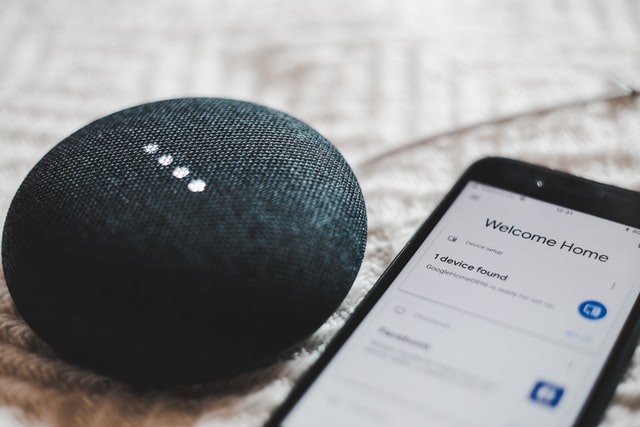
It’s hard to find a home space today that hasn’t been impacted by technology – from our private bedrooms and bathrooms to our public indoor and outdoor gathering areas. Which technologies benefit our health, safety, functionality, or comfort? You can find out in this summary about the new smart home tech expo!
There are many benefits to using smart devices at home, including improving your home’s security, enjoying more user-friendly appliances, and making your life easier. Properly managing these devices is the best way to protect your personal data from hackers. With the right measures and cybersecurity in place, you can use all of your smart devices and work from home in confidence. Keep these tips in mind to set up a safe network so that you can enjoy your smart devices safely.
